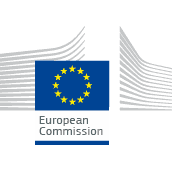
Data fusion for maritime security applications
Deadline: Aug 25, 2016
CALL EXPIRED
CALL EXPIRED
Innovation
International Cooperation
IT
Cross-border cooperation
Horizon Europe
Research
Topic Description
Specific Challenge:In coherence with the objectives of regulation No 1052/2013 establishing the European Border Surveillance System (EUROSUR), the EU Maritime Security Strategy Action Plan (EUMSS AP) advocates the "strengthening of […] the information exchange to optimise the surveillance of the EU maritime area and its maritime borders" and "the improvement of the situational awareness and increase reaction capability at the external borders of the Member States of the Union for the purpose of detecting, preventing and combating illegal immigration and cross-border crime, and contributing to ensuring the protection and saving of lives of migrants").
Large amounts of “raw” data are being collected nowadays, at unprecedented scale, coming from different sources, from different sorts of assets from different EU Member States, from the Internet and social networks, and gathered for different security purposes, in a variety of formats, are available but not necessarily exploitable because they are not accessible at the same time nor interoperable, until they are “fused” and made “understandable” to all systems supporting information exchange, situational awareness, and decision-making and reaction capability at the EU external maritime borders.
Scope:Many detection systems are available to collect data that are useful for maritime security, coastal surveillance and beyond. The fusion of these data requires the development of methods and tools that take account of the technical characteristics of existing systems, and the specific context of all aspects of maritime security. As regards semantic interoperability, the CISE data model should be used to avoid the duplication of solutions.
"Fusion" may refer to “intelligence correlation to produce higher level (or more accurate) information". It may involve, inter alia:
- mixing several homogeneous data to produce another data of superior quality;
- pre-processing raw data and associating heterogeneous data, produced by different types of sensors, that refer to the same actual object or event, to produce information of superior quality;
- overlapping surveillance pictures produced by different sources and generate a picture without redundant objects/tracks and allowing to deal with faulty sensors and data;
- combining data acquired at different points in time through sensors (e.g. radars and camera) installed on the same platform or on different ones (underwater or surface vessels, drones or aircraft, satellite systems (including but not exclusively Copernicus, Galileo, and EGNOS);
- combining offline with realtime data.
Data fusion techniques, complementing the existing information systems and sensor platforms, should help focusing the geographical zones to be monitored through the deployment of surveillance capabilities.
EU-funded R&D cooperative projects and EU Agencies have touched upon the issue. Data fusion may bear on, or generate information needing classification. Ethical and societal issues need to be properly addressed. Proposals need to build on existing results, focus on the remaining gaps and avoid duplication with previous endeavours.
In line with the EU's strategy for international cooperation in research and innovation[[COM(2012)497]] international cooperation is encouraged, and in particular with international research partners involved in ongoing discussions and workshops, with the European Commission. Legal entities established in countries not listed in General Annex A and international organisations will be eligible for funding only when the Commission deems participation of the entity essential for carrying out the action.
Whereas activities will have an exclusive focus on civil applications, coordination with the activities of the European Defence Agency (EDA) may be considered with possible synergies being established with projects funded by the EDA programmes. The complementarity of such synergies should be described comprehensively. On-going cooperation should be taken into account.
The outcome of the proposal is expected to lead to development up to Technology Readiness Level (TRL) 7; please see part G of the General Annexes.
Indicative budget: The Commission considers that proposals requesting a contribution from the EU of € 8million would allow for this topic to be addressed appropriately. Nonetheless this does not preclude submission and selection of proposals requesting other amounts.
Expected Impact:- Description of how to integrate the knowledge on data fusion originating from pre-existing EU-funded R&D cooperative projects;
- Contribution to the further development of EUROSUR and to the implementation of the 2nd work strand of the EUMSS Action Plan dealing with "Maritime awareness, surveillance and information sharing";
- Improved and extended maritime border situational awareness;
- Improved operational support to search-and-rescue activities;
- Improved border surveillance systems in terms of information exchange, situational awareness, and decision-making and reaction capabilities;
- Solutions better fitting the existing systems and the actual concepts of operations set for missions involving the assets of several Member States maritime border surveillance, security and search-and-rescue organisations;
- Pre-standards to be followed by standardization procedures with the ESO;
- Solutions demonstrated in the context of interagency and cross-border cooperation;
- Solutions interfaced with existing infrastructure (systems, platforms and networks of sensors.).
Public link: Only for registered users
 EC - Horizon Europe
EC - Horizon Europe


Please Log In to See This Section